The Quimbaya culture, renowned for its artistry and cultural significance, flourished in ancient Colombia. One notable artifact from this civilization is the large and heavy unburnished buff slab figure attributed to the Caldas complex, dating between 1000 and 1400 AD. This extraordinary piece offers insights into the Quimbaya way of life, artistic traditions, and cultural values. Follow archeology.dulichvn.net to discover many hidden mysteries that have yet to be discovered.
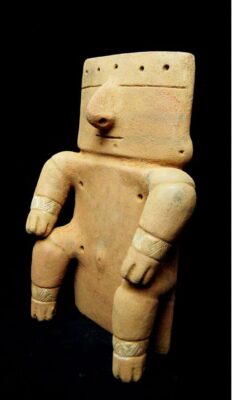
Understanding the Quimbaya Culture
The Quimbaya culture represents one of Colombia’s most remarkable ancient civilizations, renowned for its profound contributions to art, metallurgy, and cultural traditions. This civilization left an indelible mark on history, reflected in its rich legacy of artifacts and innovative practices.
Geographic and Historical Context
The Quimbaya civilization flourished in the Andean region, particularly in present-day Colombia, from the 6th to the 16th centuries. Nestled in the fertile valleys of the Cauca and Magdalena Rivers, the Quimbaya people leveraged their environment for agriculture, trade, and artistic innovation.
Society and Governance
The Quimbaya were organized into small, cohesive communities that operated under a hierarchical structure. Their leaders, often regarded as intermediaries with the spiritual world, guided both secular and religious life.
Legacy and Influence
The civilization’s influence extended far beyond its time, with its artifacts inspiring subsequent generations and offering insights into pre-Columbian societies in South America.
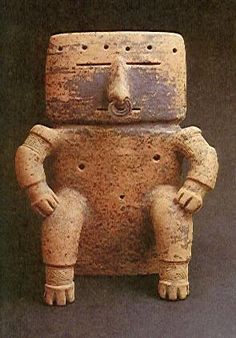
The Unburnished Buff Slab Figure: A Masterpiece of Quimbaya Artistry
The unburnished buff slab figure stands as a testament to the remarkable ingenuity of the Quimbaya culture, offering profound insights into their artistic, cultural, and religious traditions. This artifact is not merely a work of art but a window into the society that crafted it centuries ago.
Imposing Size and Structure
This figure is notable for its large, solid form, crafted from unburnished buff material. Its sheer weight and robust construction speak volumes about the resources and techniques employed by the Quimbaya artisans. Such attributes also reflect the artifact’s intended durability and significance.
Material and Technique
Unburnished buff material was a deliberate choice, emphasizing earthy tones and natural aesthetics. The meticulous shaping of the figure, despite its solid composition, highlights the advanced skills of its creators, showcasing a harmonious blend of functionality and artistry.
Unique Features
The slab figure displays minimalistic yet striking features, with carefully designed contours and proportions. These details likely held symbolic meaning, resonating with the cultural and spiritual beliefs of the Quimbaya people.
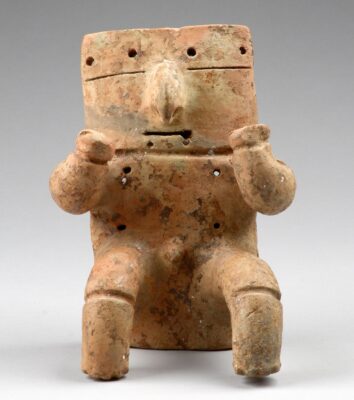
See more: City of Towers: Exploring the Towering History of Bologna
The Significance of the Quimbaya Slab Figure
The unburnished buff slab figure is not merely an artifact but a cultural masterpiece that serves as a bridge between the past and the present. Its historical, artistic, and cultural importance makes it a cornerstone in the study of pre-Colombian civilizations in Colombia.
Understanding the Quimbaya Society
The slab figure provides invaluable insights into the societal structure of the Quimbaya people, one of the most advanced ancient civilizations in the Andean region. It reveals their religious beliefs, ceremonial practices, and the hierarchical nature of their community.
Symbol of Spirituality
Artifacts of this kind were likely central to religious or spiritual rituals, offering a glimpse into the Quimbaya’s cosmological views. This figure may have represented deities or ancestral spirits, emphasizing the deep connection between their daily lives and spiritual practices.
Historical Context
Dating back to 1000–1400 AD, the figure belongs to a pivotal era in Colombian history. It reflects the cultural evolution of the Quimbaya and their interactions with the surrounding environment and neighboring societies.
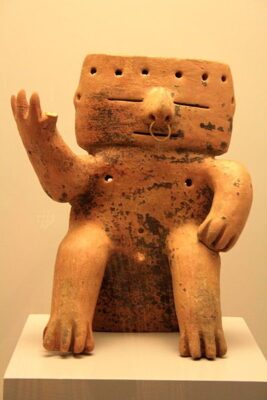
Conclusion
The large and heavy unburnished buff slab figure from the Quimbaya culture’s Caldas complex is more than an ancient artifact. It is a window into the lives, beliefs, and artistry of a civilization that once thrived in Colombia. By studying and preserving such treasures, we not only honor the Quimbaya legacy but also enrich our understanding of humanity’s cultural evolution.

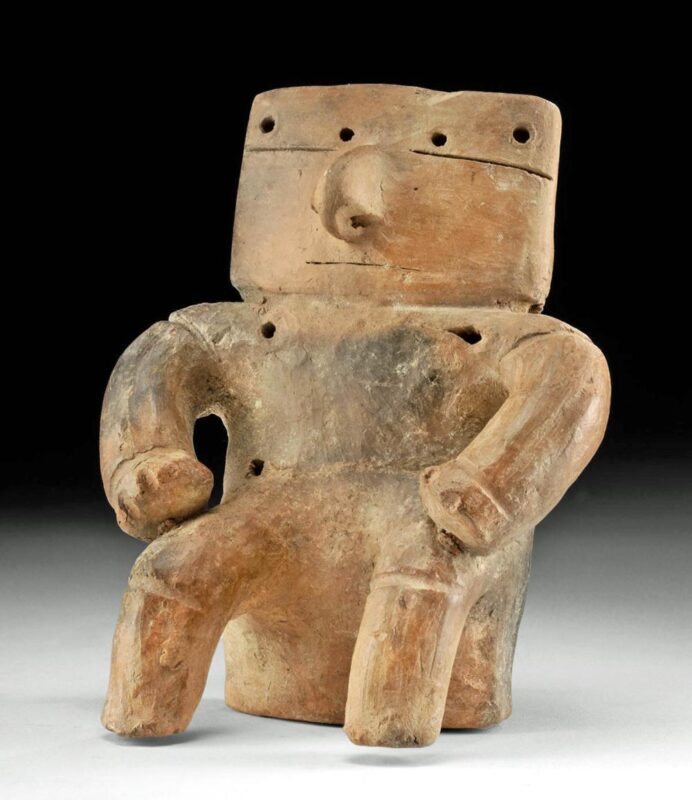
CÁC TIN KHÁC
Mary Walton: The Forgotten Inventor Who Helped Clean Up America’s Cities
Tomb of Queen Nefertari in the Valley of the Queens, Egypt
Discover the Hypostyle Hall of the Temple of Hathor at Dendera
Venus de Losange: Unveiling the Mystery of a 20,000-Year-Old Paleolithic Icon